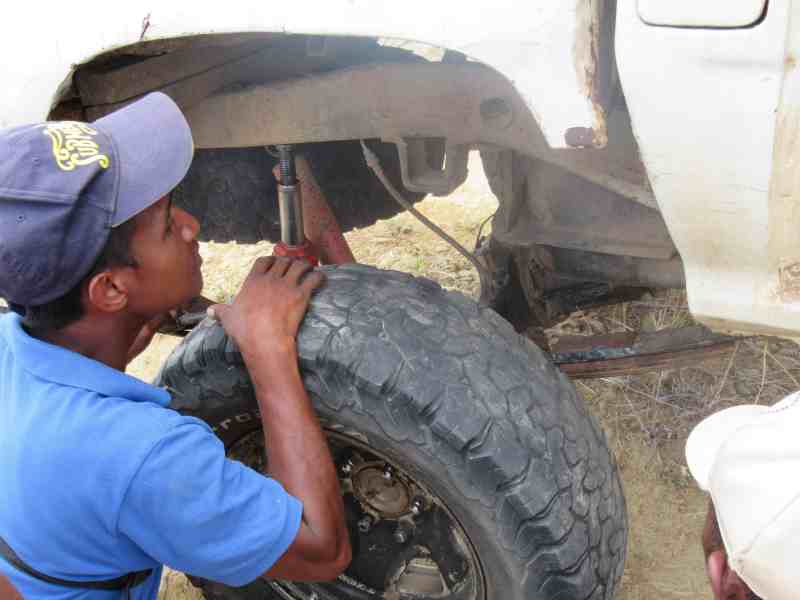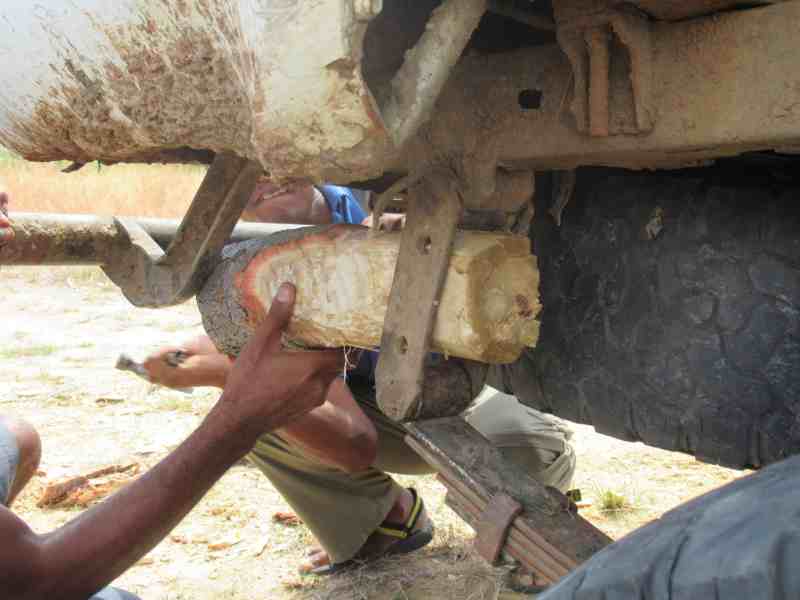Uncategorised
Travelling Mechanics: magic in rural Madagascar
Travelling mechanics are an addition to many forms of public transport in rural Madagascar. They accompanies old vehicles weighed down by passengers and luggage along roads too rough to be called roads in areas where only a handful of vehicles per day pass.
My first time witnessing these magicians at work was in the 4×4 driven between the villages of Beroroha and Bernoone on the way to the start of the Makay hike in the southern part of the country. Loaded with the gear, supplies and many passengers clearly the most sensible way to drive was like a complete lunatic bouncing and rattling up and down rocky hills and making great progress. This was all very well and good until the suspension broke in the middle of nowhere.

Undeterred by the suspension and maybe even expecting it, the drivers assistants who had been sitting in the back on the outside of the 4×4 suddenly sprung into life as knowledgeable mechanics. One was off with a hatchet cutting down a branch while the other got the jack out. The driver spoke to the guy with the jack and I knew I was about to see something a bit different in the field of vehicle repair. What happened over the next twenty minutes was one of the most impressive things I have ever seen. There was no waiting for parts or a repair van out here and I watched the magic unfold before my eyes.
The bottle jack was wedged in between the bars of the suspension and the bottom of the chassis and pumped up so that the chassis started to lift off the suspension. Flat rocks from the surrounding ground were then placed at a point where they supported the suspension and the jack removed. It was put in at another point on the suspension and the chassis raised further so that more rocks could be inserted. The end result was the weight was completely off the broken suspension part and it could be moved freely. All the while the other assistant has chopped down a thick branch and formed it with his hatchet into a curved piece of timber about a foot long. The reason it was curved is to fit the suspension as they used it as a support for the broken part. Then to my disbelief out came a length of rubber band about four metres long and four inches wide and was used to tie the timber to the suspension. It was wrapped around numerous times and knotted and so kept both the piece of timber and the suspension in place. For his next trick the driver took some of the rope which was being used to tie down the cover of our supplies and wrapped it around the timber and broken suspension six times to secure things further.
They still haven’t finished and another branch was on the way which was cut into shape with the hatchet and hammered into place on the other side of the suspension to make sure there is not too much movement. With little movement this took the pressure off the broken part and allowed us to continue.
The best travelling mechanic I came across was when I went up to southeast coast with a driver called Mr Eddie in one of the most brittle vehicles I have ever travelled in. Just half an hour into what turned into a 30 hour trip the mechanic had to strip part of the front suspension to replace a sheared bolt before putting the suspension back together again. The speed of the replacement was very impressive and the whole thing was done in a little over half an hour. This was the first of 2 occasions the mechanic had to strip the suspension and repair it which he did with basic tools and the occasional help of Eddie.

Watching this representative of the travelling mechanics work his magic it occurred to me there is nowhere else I know where vehicles involved in public transport travel with a mechanic, but the routes are really bad in parts and the battering taken even at a slow speed tests transport to breaking point. Most vehicles used for public transport are fully loaded with passengers and baggage and far exceed the manufacturers’ recommendations for weight. The only exception to this are the better taxi brousse companies which have more expensive tickets to make their routes profitable.
Travelling mechanics in Madagascar have to be a certain type of operator. His job is not to access damage and fit new parts but to access and work a sometimes-minor miracle so the vehicle can limp on until the next breakdown. My admiration for these travelling mechanics, or skilled problem solvers, is high as they are on the frontline of keeping the fleet of old and ageing vehicles going on some of the worst roads in the world.

